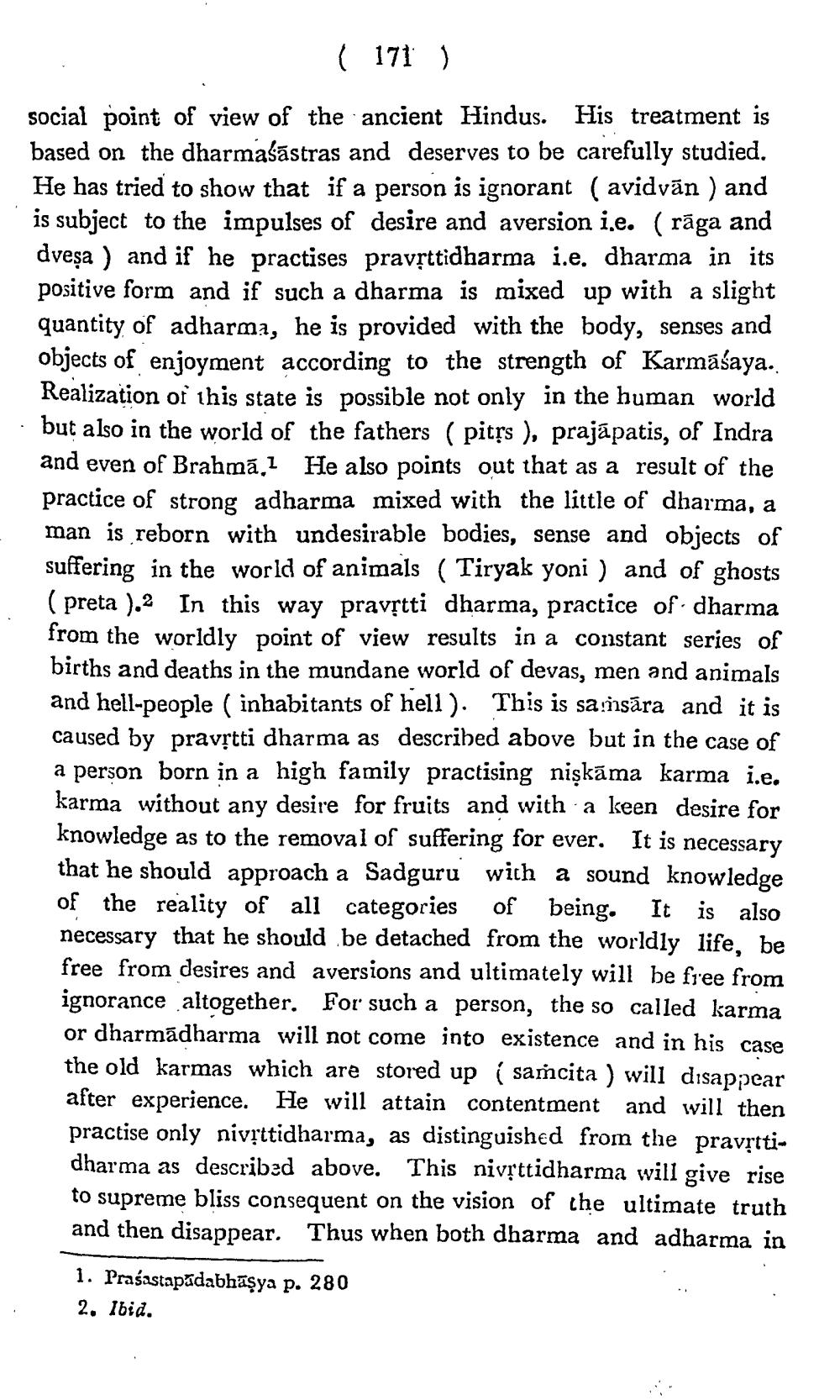________________
( 171 )
social point of view of the ancient Hindus. His treatment is based on the dharmaśāstras and deserves to be carefully studied. He has tried to show that if a person is ignorant (avidvān) and is subject to the impulses of desire and aversion i.e. ( rāga and dveṣa) and if he practises pravṛttidharma i.e. dharma in its positive form and if such a dharma is mixed up with a slight quantity of adharma, he is provided with the body, senses and objects of enjoyment according to the strength of Karmāśaya.. Realization of this state is possible not only in the human world but also in the world of the fathers (pitṛs), prajapatis, of Indra and even of Brahma,1 He also points out that as a result of the practice of strong adharma mixed with the little of dharma, a man is reborn with undesirable bodies, sense and objects of suffering in the world of animals (Tiryak yoni) and of ghosts (preta). In this way pravṛtti dharma, practice of dharma from the worldly point of view results in a constant series of births and deaths in the mundane world of devas, men and animals and hell-people (inhabitants of hell). This is samsara and it is caused by pravṛtti dharma as described above but in the case of a person born in a high family practising niṣkāma karma i.e. karma without any desire for fruits and with a keen desire for knowledge as to the removal of suffering for ever. It is necessary that he should approach a Sadguru with a sound knowledge of the reality of all categories of being. It is also necessary that he should be detached from the worldly life, be free from desires and aversions and ultimately will be free from ignorance altogether. For such a person, the so called karma or dharmadharma will not come into existence and in his case the old karmas which are stored up (samcita) will disappear after experience. He will attain contentment and will then practise only nivṛttidharma, as distinguished from the pravṛttidharma as described above. This nivṛttidharma will give rise to supreme bliss consequent on the vision of the ultimate truth and then disappear. Thus when both dharma and adharma in
1. Prasastapadabhāṣya p. 280
2. Ibid.




